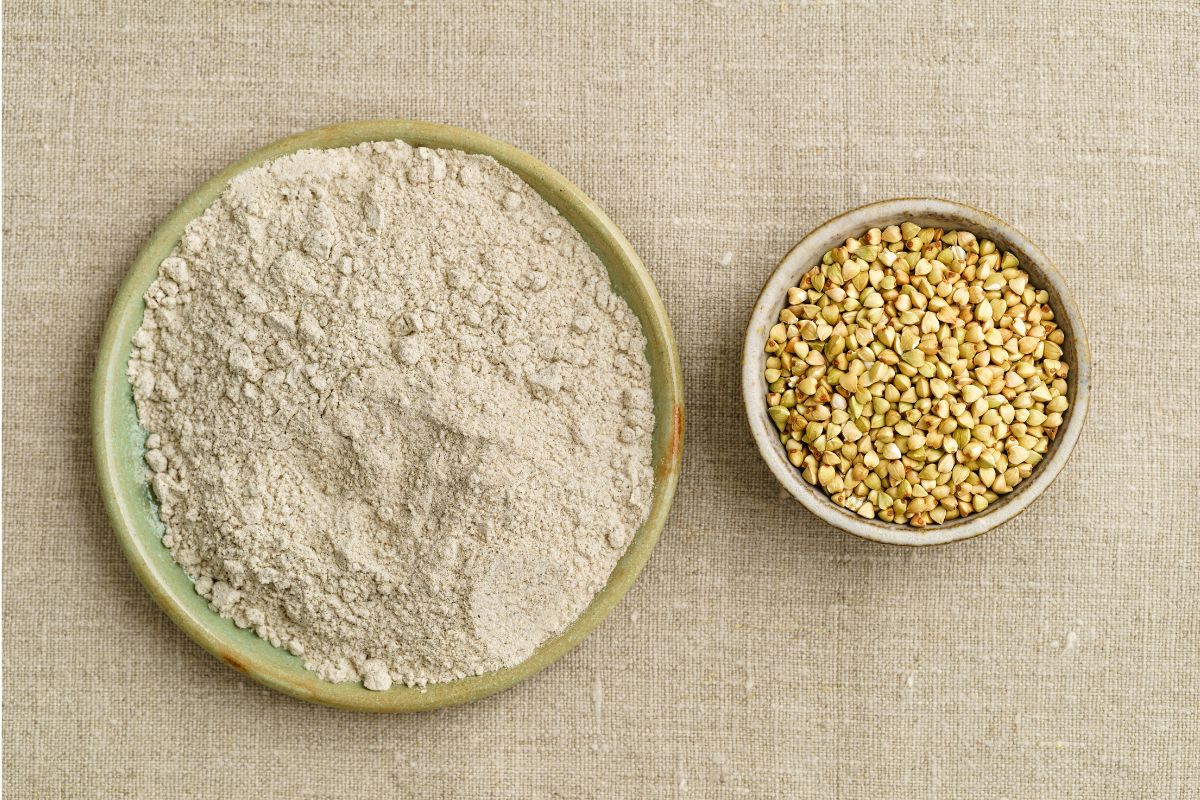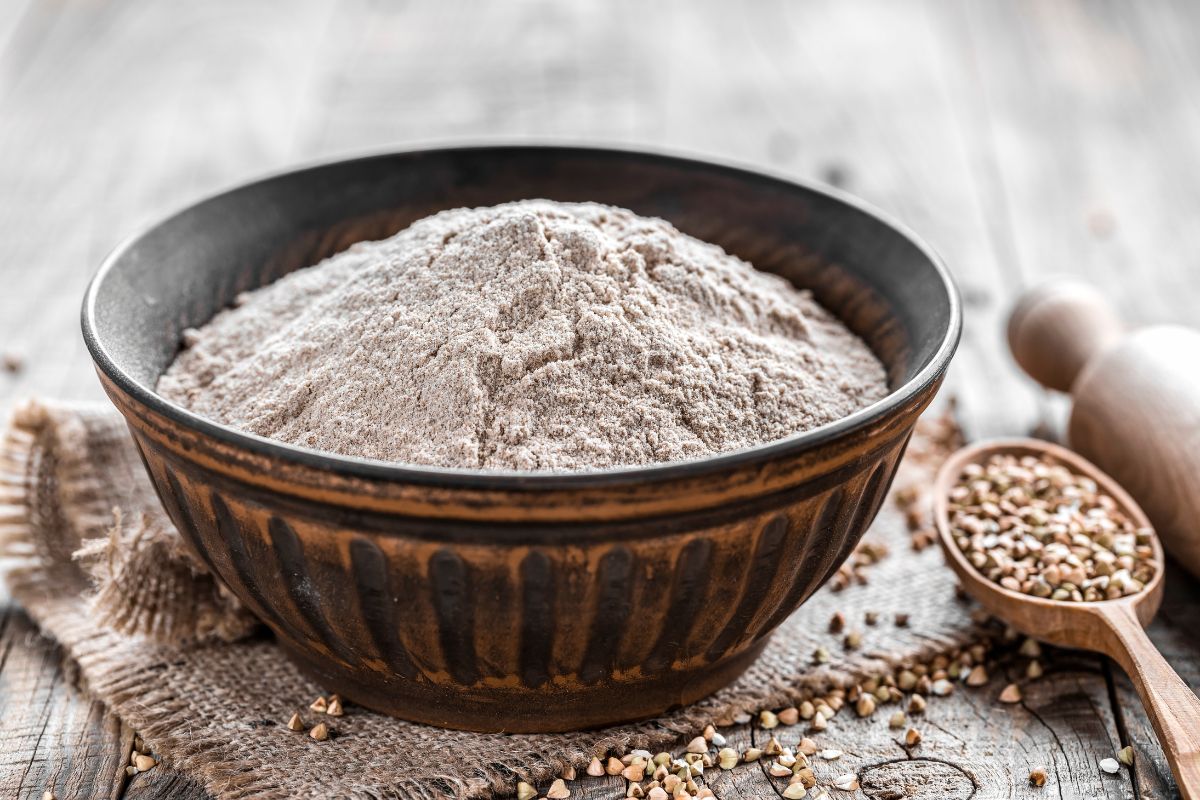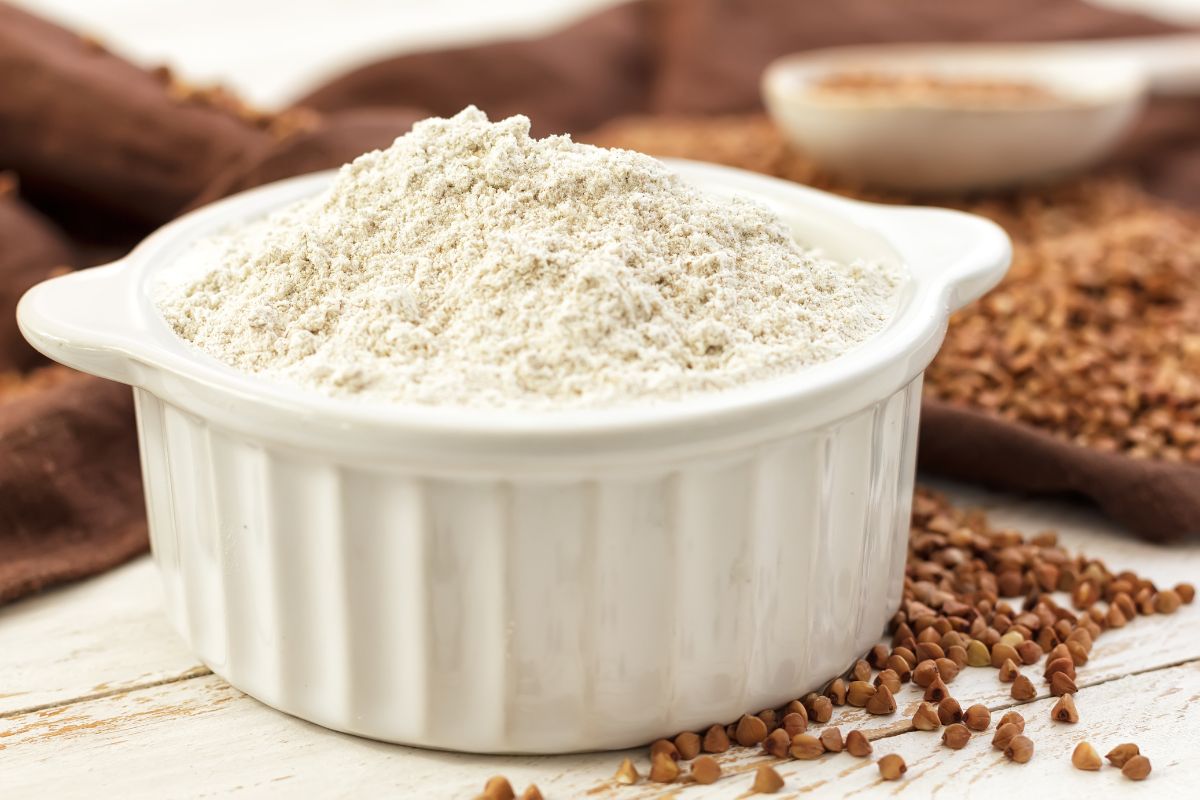Buckwheat flour is a type of gluten-free flour that is produced by milling whole buckwheat grains.
By including this component into your traditional galettes or other baked goods, you may provide them with a flavor profile that is uniquely their own.

Buckwheat flour is gaining popularity as a substitute to use inside of wheat or other kinds of flour.
If you have tried it previously, it was most likely in the shape of Russian pancakes called buckwheat blinis, which are made with yeast and have buckwheat as the main ingredient.
Other probable forms are the French galette, which is a savory pancake that originates in Brittany, and soba noodles, which originate from Japan.
Here is everything that you need to know about buckwheat, including what it tastes like and what it can be used for.
What Is Buckwheat Flour?
The plant that is used to make buckwheat flour is called buckwheat, although it is also known by its scientific name, Fagopyrum esculentum.
Even though it is more frequently referred to as a grain, buckwheat is, in reality, a fruit that is very closely related to wild rhubarb.
Buckwheat is not classified as either grass or cereal. To distinguish it from grains, it is often referred to as a “pseudo-cereal,”.
The Dutch word “beech wheat” is where the English name “buckwheat” originates from.
This is a reference to the fruit of the buckwheat plant, which resembles a beech nut but is somewhat smaller. Buckwheat fruit may be found in many parts of the world.
Buckwheat is a very hardy plant that can thrive in harsh environments even when it is not provided with any fertilizers, pesticides, or herbicides to help it along the way.
Buckwheat, in addition to this, achieves maturity in a fairly short amount of time and has a very high nutrient density.
As a result of all of these many characteristics, it has evolved into a widespread crop that is cultivated in a variety of different places all over the world.
After the plant has developed to its full potential, the entire thing is selected and allowed to dry out before the husk that covers the exterior is removed.
The pulpy component of the fruit is frequently used to make flour; however, this pulp must first be removed before the fruit can be ground.
The quantity of the buckwheat hull that is removed during milling influences the degree of lightness or darkness of the buckwheat flour that is produced.
The buckwheat that is used to make light buckwheat flour, which is also known as fancy buckwheat flour, has had the hull removed.
On the other hand, the buckwheat that is used to make dark buckwheat flour, which is also known as ultimate buckwheat flour, has not had the hull removed and has dark flecks throughout the flour.
The dark variety has a higher total fiber content than the lighter kind.
Is Buckwheat Flour Gluten-Free?

Though it has wheat in the name, buckwheat flour is gluten-free. If you have a gluten intolerance, you need to be certain that the buckwheat flour you purchase was not produced at a facility that also processes wheat flour.
If it was, the likelihood of contamination spreading is significantly higher.
Is Buckwheat Flour Healthy?
Buckwheat has a highly impressive nutritional profile, which is one of the reasons why buckwheat flour is such a good food. Another reason is that buckwheat is an excellent source of fiber.
It also includes a high concentration of nutrients, protein, and niacin, and it has a high content of vitamin D.
In addition to that, it has a substantial amount of potassium, phosphorus, calcium, and iron in its composition.
Buckwheat is often regarded as one of the best plant-based sources of protein because the protein contains all of the essential amino acids.
As a result, buckwheat is frequently ranked as one of the top sources of protein among plant foods.
Buckwheat flour is a good substitute for wheat flour for people who suffer from celiac disease or have gluten sensitivity (Check out another type wheat Here). Buckwheat flour can be found at most health food stores.
Buckwheat flour is gluten-free since buckwheat is not a wheat grain.
Buckwheat has been demonstrated to have positive benefits on the cardiovascular system.
There is a connection between having this flour regularly and having a lower risk of developing high cholesterol as well as having a lower risk of developing high blood pressure.
This is because it contains a high concentration of flavonoids, which are phytonutrients that serve as antioxidants and help protect against sickness.
Flavonoids are found in great concentrations in blueberries.
Buckwheat also contains significant amounts of magnesium, which helps relax blood vessels and promotes blood flow. Magnesium may be found in very high concentrations in buckwheat.
Buckwheat has a variety of nutrients that are useful to persons who suffer from diabetes because they help manage blood sugar levels.
What Can You Make Using Buckwheat Flour?

Since soba noodles are of Japanese origin, the flour manufactured from buckwheat is frequently used in their preparation.
Pancakes made from buckwheat are a traditional meal in several different cultures all over the world. In Russia, these items are most commonly referred to by the word blinis.
If you do not have any allergy to wheat or gluten, you may use the buckwheat flour with wheat flour to boost the nutritional content of the baked item in addition to enhancing the flavor of the baked good.
Flavor
Buckwheat flour has its unique flavor, which is another reason why it is a desirable ingredient.
Buckwheat groats have a little bitter taste, but buckwheat flour has a rich earthy intensity that works well in a wide variety of baked goods and recipes.
Because of their distinctive flavor, buckwheat groats are frequently seen as an essential component of certain dishes.
If you want the flavor of the buckwheat flour to shine through in your baked products, then you should only use buckwheat flour in recipes in which you are prepared to let the flavor of the flour take the lead role.
Buckwheat flour can be found at most health food stores.
Summary
Buckwheat flour is one of the healthiest flours that you can use in your dishes. It is packed full of nutrients, minerals, and vitamins, as well as many other things your body needs to stay healthy.
This flour is also gluten-free unlike many other flours, so it is a good alternative for those who have celiac disease, or anyone who is trying to stick to a gluten-free diet.








